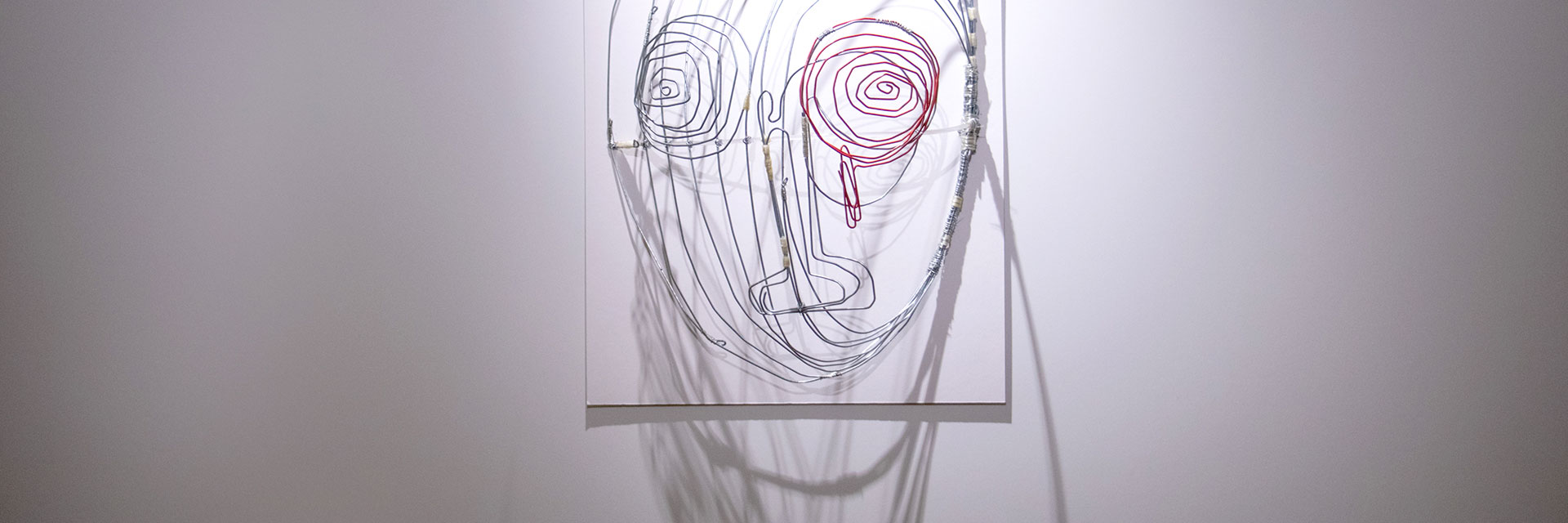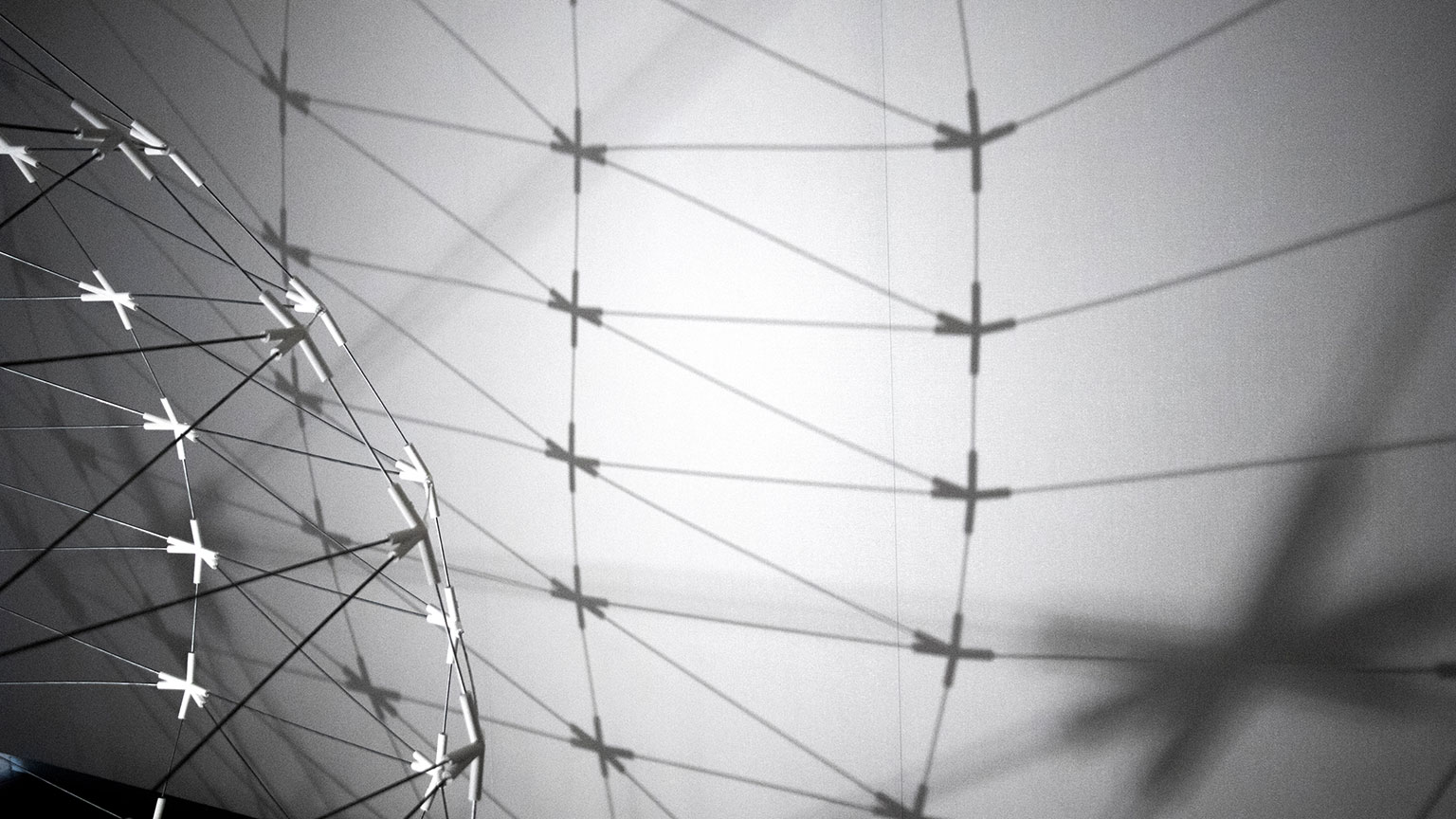
What is a Line? Interdisciplinary Research Exhibit
Highlights Culture, Craft, and Computation Possibilities
What is a Line? Interdisciplinary Research Exhibit
Highlights Culture, Craft, and Computation Possibilities
Vernelle A.A. Noel can connect culture, cognition, and computing with lines.
A computational design scholar, architect, and artist, Noel is the curator of the Graham Foundation-funded exhibit Design and Making in the Trinidad Carnival: Histories, Re-imaginations, and Speculations of Computational Design Futures.
The exhibition showcases Noel’s investigations and re-conceptualizations of the craft of wire-bending in the Trinidad Carnival. It also answers the interdisciplinary question, “What is a line?” through traditional and new expressions.
And after a walk through this exhibit, you will never look at a line the same way again. The lines Noel curated will be especially poignant during Trinidad and Tobago’s Carnival, which happens February 20 and 21 this year.
Design and Making in the Trinidad Carnival: Histories, Re-imaginations, and Speculations of Computational Design Futures is on display at the Price Gilbert Library Gallery (Georgia Tech Library's first-floor gallery) through February 28, 2023.
Noel’s research

Noel, an assistant professor in the Schools of Architecture and Interactive Computing, and Director of the Situated Computation + Design Lab used the theme of “the line,” to connect concepts and realities for the exhibit.
“This exhibition showcases lines as cognitive expressions, codes, and structures in sculptures, drawings, and more,” she said.
Those lines demonstrate how we might restore and reimagine cultural practices and histories through digital technologies. “The Trinidad Carnival and its craft of wire-bending is part of my history and culture,” she said. “Wire-bending, like weaving, drawings, writing, dancing, and computer programming, it can be argued, all proceed along lines. And I’m obsessed with lines.”
And when those lines start to become environments or structures, things start getting really interesting, Noel said.
“Architecture investigates and materializes how humans engage with the environment, materials, technology, culture, and society. My expertise in design computation includes developing and questioning technology in research, thinking, and practice. In this exhibition, I show what the craft of wire-bending might be and do at the scale of architecture, structures, and education.”
Noel’s work highlights traditional wire-bending techniques, new design and fabrication methods that include computer-controlled machines, advanced manufacturing, and computer interactions. She also shows off the results of novel software that she developed to extend wire-bending to include digital design methods, digital fabrication, and drawings.
The exhibit

The exhibit displays wire sculptures, masks, drawings, light paintings, and experimental structures.
’The exhibition makes visible the people, labors, and expressions embedded in this cultural design practice. The history and innovations in the Trinidad Carnival are essential. The labor that goes into digital fabrication is significant,” Noel said.
Long-exposure photographs of Noel engaging in wire-bending are also on display, making visible the invisible and questioning the physical in the traditional and technological. "It challenges the separation of mind from body as we think through and with our bodies," she said.
Similarly, the shadows created by the masks and other artifacts in the exhibit, are open to many interpretations. “At first glance, the masks are faces,” Noel said, “but their shadows speak, telling us much more. Visitors are in dialogue with the faces, the shadows, their thoughts, and themselves for multiple interpretations from multiple perspectives,” she said.
“I main goal of the exhibition is to showcase my research at the intersection of culture, craft, and computing through the line. Another goal is to make invisible histories, people, and knowledge speak." she said.
Design and Making in the Trinidad Carnival: Histories, Re-imaginations, and Speculations of Computational Design Futures is generously supported by the Graham Foundation for Advanced Studies in the Fine Arts, the College of Design, the School of Architecture, and the School of Interactive Computing. Founded in 1956, the Graham Foundation for Advanced Studies in the Fine Arts fosters the development and exchange of diverse and challenging ideas about architecture and its role in the arts, culture, and society.